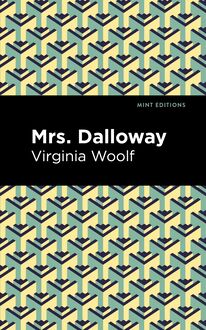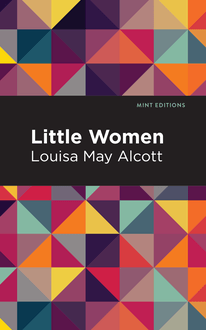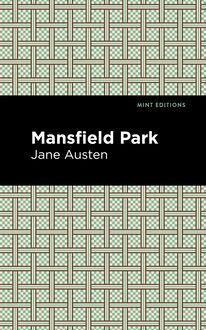-
 Univers
Univers
-
 Ebooks
Ebooks
-
 Livres audio
Livres audio
-
 Presse
Presse
-
 Podcasts
Podcasts
-
 BD
BD
-
 Documents
Documents
-
- Cours
- Révisions
- Ressources pédagogiques
- Sciences de l’éducation
- Manuels scolaires
- Langues
- Travaux de classe
- Annales de BEP
- Etudes supérieures
- Maternelle et primaire
- Fiches de lecture
- Orientation scolaire
- Méthodologie
- Corrigés de devoir
- Annales d’examens et concours
- Annales du bac
- Annales du brevet
- Rapports de stage
La lecture à portée de main
Vous pourrez modifier la taille du texte de cet ouvrage
Découvre YouScribe en t'inscrivant gratuitement
Je m'inscrisDécouvre YouScribe en t'inscrivant gratuitement
Je m'inscrisEn savoir plus
Vous pourrez modifier la taille du texte de cet ouvrage
En savoir plus

Description
Oswald Cray is so often praised for his strong values and nobility, that it is easy for him to forget that he still has flaws. After a nosy servant, who meddles in others’ belongings, finds a letter he deems to be suspicious, he presents false charges against Dr. Davenal, a kind and patient man who previously held a sterling reputation. Unaware that it was all a misunderstanding, Cray places too much trust in his own suspicions and breaks off his engagement with the doctor’s daughter. As chaos ensues as broken hearts, criminal activity and ruined reputations continue to feed the drama, escalating an issue that could have been easily avoided. Written by an internationally bestselling author, Mrs. Henry Wood, Oswald Cray: A Novel is rarely found in print. Though lesser known than her other novels, Oswald Cray: A Novel deserves recognition for its elegant prose and amusing tone. Featuring complex characters and impactful themes, this work of Victorian sensation fiction is compelling and intricate, fueled by the relatable flaws of the characters and their misfortunes. Decorated with detail of specific aspects of culture, such as women’s fashion, Oswald Cray: A Novel allows modern readers an uncommon perspective on the culture of social norms of Victorian England. Though first published in 1864, Mrs. Henry Wood’s Oswald Cray: A Novel remains to feel fresh and relatable, while simultaneously allowing modern readers to be immersed in this 19th century community. This edition of Oswald Cray: A Novel by Mrs. Henry Wood now features an eye-catching new cover design and is printed in a font that is both modern and readable. With these accommodations, this edition of Oswald Cray: A Novel creates an accessible and pleasant reading experience for modern audiences while restoring the original sentiment and drama of Mrs. Henry Wood’s work.
Sujets
Informations
| Publié par | Mint Editions |
| Date de parution | 14 mai 2021 |
| Nombre de lectures | 0 |
| EAN13 | 9781513286143 |
| Langue | English |
| Poids de l'ouvrage | 1 Mo |
Informations légales : prix de location à la page 0,0600€. Cette information est donnée uniquement à titre indicatif conformément à la législation en vigueur.
Extrait
Oswald Cray
A Novel
Mrs. Henry Wood
Oswald Cray: A Novel was first published in 1864.
This edition published by Mint Editions 2021.
ISBN 9781513281124 | E-ISBN 9781513286143
Published by Mint Editions®
minteditionbooks.com
Publishing Director: Jennifer Newens
Design & Production: Rachel Lopez Metzger
Project Manager: Micaela Clark
Typesetting: Westchester Publishing Services
C ONTENTS I. D R . D AVENAL II. L ADY O SWALD ’ S L ETTER III. M ISS B ETTINA D AVENAL IV. O SWALD C RAY V. R ETROSPECT VI. N EAL ’ S C URIOSITY VII. A N I NTERRUPTION VIII. A T ACIT B ARGAIN IX. E DWARD D AVENAL X. A T REAT FOR N EAL XI. L ADY O SWALD ’ S J OURNEY XII. W AITING FOR N EWS XIII. P AIN XIV. A W HIM OF L ADY O SWALD ’ S XV. M ARK C RAY ’ S M ISTAKE XVI. N EAL ’ S D ISMAY XVII. T HE N IGHT V ISITOR TO D R . D AVENAL XVIII. A FTER THE V ISITOR ’ S D EPARTURE XIX. C OMMOTION XX. G OING D OWN TO THE F UNERAL XXI. T HE I NTERVIEW WITH THE D OCTOR XXII. T HE W ILL XXIII. N EAL ’ S V ISIT XXIV. D R . D AVENAL ’ S “F OLLY ” XXV. C OMPANY FOR M R . O SWALD C RAY XXVI. M ORE I NSTILLED D OUBT XXVII. A N I NCLEMENT A FTERNOON XXVIII. T HE L AST M EETING XXIX. A S PECIAL F AVOUR FOR N EAL XXX. T HE D OCTOR ’ S B IRTHDAY XXXI. B AD N EWS FOR H ALLINGHAM XXXII. L AST H OURS XXXIII. S ORROW XXXIV. W ORK FOR THE F UTURE XXXV. M ARK ’ S N EW P LANS XXXVI. I S M ARK IN HIS S ENSES ? XXXVII. E NTERING ON A N EW H OME XXXVIII. H OPE D EFERRED XXXIX. A N U NPLEASANT V ISIT XL. A F LOURISHING C OMPANY XLI. A S LIGHT C HECK XLII. I N THE T EMPLE G ARDENS XLIII. A N I RRUPTION ON M ARK C RAY XLIV. W AS SHE NEVER TO BE AT P EACE ? XLV. M RS . B ENN ’ S W RONGS XLVI. A N U NWELCOME V ISITOR XLVII. C OMMOTION XLVIII. D AY - DREAMS R UDELY I NTERRUPTED XLIX. T HE E VENING OF THE B LOW L. H ARD U SAGE FOR D ICK LI. W EARY D AYS LII. S OMETHING “ TURNED UP ” AT L AST LIII. A N EW H OME LIV. A B ELL R INGING OUT AT M IDNIGHT LV. A D ESOLATE N IGHT LVI. N O H OPE LVII. D READFUL T REACHERY LVIII. T HE G ALLANT C APTAIN H OME A GAIN LIX. T HE S ERGEANT -M AJOR ’ S W IFE LX. L IGHT LXI. T HE B ARGAIN S EALED LXII. “F INANCE ,” THIS T IME LXIII. S IX M ONTHS L ATER
I
D R . D AVENAL
I t was market-day at Hallingham. A moderate-sized and once beautiful town, cut up now by the ugly railroad which had chosen to take its way right through it, and to build a large station on the very spot where the Abbey Gardens used to flourish. Famous gardens once; and not so long ago the evening recreation of the townspeople, who would promenade there at sunset, whatever the time of year. Since the gardens had been seized upon for the railway purposes, a bitter feud of opinion had reigned in the place; the staid old inhabitants mourning and resenting their town’s desecration; the younger welcoming the new rail, its station, and its bustle, with all their might and main, as a grateful inbreak on their monotonous life. The trains from London (distant some sixty or seventy miles) would go shrieking and whistling through the town at any hour of the day or night: and, so far, peace for Hallingham was over.
Possibly it was because the town was famous for little else, that these Abbey Gardens were so regretted. Hallingham Abbey had been renowned in the ages gone by; very little of its greatness was left to it now. The crumbling hand of time had partially destroyed the fine old building, an insignificant portion of it alone remaining: just sufficient to impart a notion of its style of architecture and the century of its erection: and this small portion had been patched and propped, and altogether altered and modernised, by way of keeping it together. It was little more than an ordinary dwelling-house now; and at the present moment was unoccupied, ready to be let to any suitable tenant who would take it. But, poor as it was in comparison with some of the modern dwellings in its vicinity, it was still in a degree bowed down to by Hallingham. There was something high-sounding in the address, “The Abbey, Hallingham,” and none but a gentleman born and bred must venture to treat for it.
It stood alone: the extensive gardens in front of it; the space once occupied by the chapel behind it. All traces of the chapel building were gone now, but its mossy gravestones were imbedded in the ground still, and the spot remained as sacred as a graveyard. The Latin inscriptions on some of these stones could be yet made out: and that on one attracted as much imaginative speculation as the famed gravestone in the cloisters of Worcester Cathedral. A few Latin words only were on it, signifying “buried in misery:” no name, no date. Thoughtful natures would glance at that stone as they passed it, with an inward breath of hope—perhaps of prayer—that the misery experienced by its unhappy tenant in this world had been exchanged for a life of immortality. This graveyard was not a thoroughfare, and few cared to walk there who were absorbed in the bustle and pleasures of life; but the aged, the invalid, the mourner might be seen there on fine days, seated on its one solitary bench, and buried in solemn reflections. A short space of time, more or less, as it might happen, and they would be lying under gravestones in their turn: a short space of time, my friends, and you and I shall be equally lying there.
The broad space of the public road running along the Abbey’s front divided it from the gardens, the gardens being the public property of the town. On the opposite side of these gardens, furthest from the Abbey, were the buildings of the new station and the lines upon lines of rails.
It is well to say lines upon lines of rails! Hallingham said it—said it with a groan. Not content with a simple line, or a double line of rails, sufficient for ordinary traffic, the railway authorities had made it into a “junction”—“Hallingham Junction!”—and more lines branched off from it than you would care to count. This was at the east end of the town; beyond it was the open country. Some of the lines made a sort of semicircle, cut off a corner of the town, and branched off into space. It’s true it was a very shabby little corner of the town that had thus been cut off, but Hallingham did not the less resent the invasion.
Walking down to Hallingham along the broad road leading from the Abbey, its busiest part was soon gained. Let us look at it today: Tuesday. It is market-day at Hallingham, and the hot July sun streams full on the people’s heads, for there’s no room for the raised umbrellas, and they afford little continuous shade. It is the large, wide, open space in front of the town-hall where we have halted, and here from time immemorial the market people have sat to chaffer and change, barter and sell. Country women expose their poultry and eggs, their butter and cream cheese, and their other wares, all on this spot. No matter what the weather—in the dog-days of summer, in the sharp snow, the pitiless storm of winter—here they are every Tuesday under their sea of umbrellas, which must be put down to allow space to the jostling crowd when the market gets full. The town had been talking the last ten years of erecting a covered market-house; but it was not begun yet.
Still on, down the principal street, leaving this market-place to the left, and what was called the West-end of the town was gained. Proud Hallingham had named it West-end in imitation of London. It was nothing but a street; its name, New Street, proclaiming that it was of more recent date than some of the other parts. It was really a fine street, wide and open, with broad white pavements, and its houses were mostly private ones, their uniformity of line being broken by a detached house here and there. It was a long street, and five or six other by-streets and turnings branched off from it at right angles.
Lying back from the street at the corner of one of these turnings was a handsome white house, detached, with a fine pillared-portico entrance in its centre and a plate on the door. It was fully as conspicuous to the street as were the other houses which abutted on the pavement. A level lawn was before it, divided from the street by low light iron railings, its small light gate in the midst, opposite the entrance-door. Narrow flower-beds, filled with gay and charming flowers, skirted the lawn before the rails; on the sides, but not in front, flourished evergreens close to the railings behind the flower-beds, making a sort of screen. An inclosed garden lay at the back of the house, and beyond the garden were the stables. On the brass plate—you could read it from the street,—was inscribed “Dr. Davenal.”
He was the chief surgeon of Hallingham. Why he had taken his degree—a recent accession of dignity—people were puzzled to tell. Had he cared for high-sounding titles they could have understood it; but he did not care for them: had he been a slave to example, that might have accounted for it, for this degree-taking, as you must be aware, has come into fashion of late years: had he wished to court notoriety, he might have thought that a means to bring it to him. But Hallingham knew Dr. Davenal better. He was a simple-minded man; he liked to be out of the fashion instead of in it; and whether he wrote “doctor” or “surgeon” after his name, he could not be more deservedly renowned in his locality than he already was. He was a skilful surgeon, a careful and successful operator, and his advice in purely medical cases was sought in preference to that of any physician in Hallingham. A rumour arose, untraceable to any certain source, that his son Edward, a dashing young captain of infantry, had urged the step upon him with a view to enhance his own standing with his brother officers. The son of Mr. Davenal, a country surgeon, might be thought slightingly of: the son of Dr. Davenal need not be. Be that as it might, the rumour gained some credence, but it died away again. One patient only ventured to question Dr. Davenal as to its truth, and the d
-
 Univers
Univers
-
 Ebooks
Ebooks
-
 Livres audio
Livres audio
-
 Presse
Presse
-
 Podcasts
Podcasts
-
 BD
BD
-
 Documents
Documents
-
Jeunesse
-
Littérature
-
Ressources professionnelles
-
Santé et bien-être
-
Savoirs
-
Education
-
Loisirs et hobbies
-
Art, musique et cinéma
-
Actualité et débat de société
-
Jeunesse
-
Littérature
-
Ressources professionnelles
-
Santé et bien-être
-
Savoirs
-
Education
-
Loisirs et hobbies
-
Art, musique et cinéma
-
Actualité et débat de société
-
Actualités
-
Lifestyle
-
Presse jeunesse
-
Presse professionnelle
-
Pratique
-
Presse sportive
-
Presse internationale
-
Culture & Médias
-
Action et Aventures
-
Science-fiction et Fantasy
-
Société
-
Jeunesse
-
Littérature
-
Ressources professionnelles
-
Santé et bien-être
-
Savoirs
-
Education
-
Loisirs et hobbies
-
Art, musique et cinéma
-
Actualité et débat de société
- Cours
- Révisions
- Ressources pédagogiques
- Sciences de l’éducation
- Manuels scolaires
- Langues
- Travaux de classe
- Annales de BEP
- Etudes supérieures
- Maternelle et primaire
- Fiches de lecture
- Orientation scolaire
- Méthodologie
- Corrigés de devoir
- Annales d’examens et concours
- Annales du bac
- Annales du brevet
- Rapports de stage














